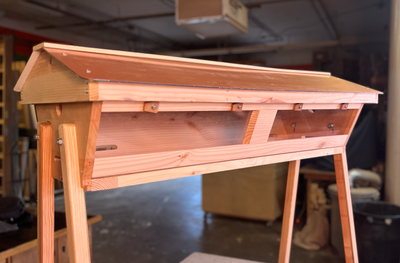Wax Production & The Environment

There comes a time in every bee season when the wax production slows down or stops completely. Even with some warm days left in the season, your bees are telling you that resources are drying up and that the transition into fall has begun.
Beeswax is like the musculoskeletal system of your colony. The bees must have beeswax to survive. They literally grow with it! But did you know that bees will only make beeswax under certain conditions? Bees need nectar to stimulate their wax producing glands. Some beekeepers will even feed 1:1 sugar syrup to encourage wax production, which is especially important for newly purchased packaged bees that don't yet have comb or resources to get started.
At the beginning of the season and during peak nectar flows, the bees can build wax so rapidly that you may end up with overcrowded conditions. On the other hand, I have been asked by countless beekeepers if they should add more hive boxes at the end of summer long after wax production has ceased. Learning the nectar flows and understanding the breadth of their impact on your colonies wax production is a beekeeper skill that takes years to develop. But you can start learning about it by studying seasonal forage maps of your bioregion and taking notes on what you observe your colonies doing at specific times. For example, in my area the maples (March), blackberries (June), and lindens (June) are strong wax producing nectar flows.
But as nectar resources begin to dry up, one of the things to address as your bees are preparing for winter is what to do with partially filled frames, or tiny combs that don't fill up an entire box. My rule of thumb is to keep the hive as condensed as possible during the fall and winter months. If the bees have combs that they aren't on or haven't adequately filled, it is probably ok to remove them. If your bees aren't actively using those combs, there is a strong chance that the combs will become moldy during the winter or that they will be digested by wax moths. Not a fun scenario for the bees or the beekeeper!
You can store the unused wax frames for the winter and return them to the bees in the springtime, or you can render the wax and use it for candles, salves, leather conditioner, furniture polish, lip balm, food wraps. Beeswax is an incredibly useful material for you and your bees!





